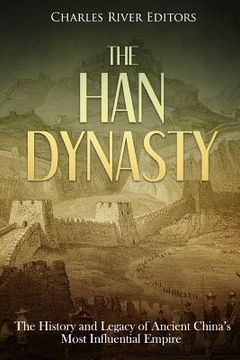The Han Dynasty: The History and Legacy of Ancient China's Most Influential Empire (en Inglés)
Reseña del libro "The Han Dynasty: The History and Legacy of Ancient China's Most Influential Empire (en Inglés)"
*Includes pictures *Includes ancient accounts *Includes online resources and a bibliography for further reading Even before the first Chinese dynasty, complex societies inhabiting the area now known as China organized into settlements, and the most important settlements were protected by rammed earth walls. The first dynasty, the Shang (1600-1050 BCE), built large walls as early as around 1,550 BCE. Differing from later walls, which were built along a strategic defense line, these walls were built to enclose the settlements and areas. The Shang would eventually be conquered from the west by the Zhou Dynasty (1046-256 BCE), which developed a complex system of government. In fact, it was the Zhou system's decline that Confucius (551-479 BCE) witnessed and drew from greatly for his political philosophy. The Zhou also created walled cities, and it was at this time that the first major conflicts with northern tribesman, the Xianyun, were recorded As the newly independent states vied for supremacy in a state of constant warfare, northern barbarians were also a constant menace. Eventually, the Chinese succeeded in eliminating many of those on their immediate northern border, but it was a bittersweet victory because it meant there was no longer a buffer between China and the even fiercer Mongols further north. This new proximity led to increased cultural exchange, as well as the Chinese adoption of nomadic fighting techniques. Ultimately, it was the wall of the state of Qi that was the first to earn the name great (literally: long) wall, because the state of Qin proved most adept at the new warfare and conquered all the others. It was this dynasty that unified the kingdoms under the name of China, but put simply, the Qin were a war machine. They defeated the Mongols north of the border and expanded their control there, while also fighting expansionary wars in all directions. The first Qin emperor died 11 years into his reign and was buried with the famous Terracotta warriors: These soldiers and equipment, all carved out of stone and other materials, formed an imperial army that would accompany the emperor into the afterlife. After the emperor's death, rebellion and strife took hold of the empire, and soon a new dynasty, the Han dynasty (206 BCE-220 CE), was founded. The previous emperor, Meng Tian, was forced to commit suicide, and the Han dynasty became known for maintaining a long period of wealth and prosperity during which Confucianism and other major intellectual trends in China flowered. However, they had trouble with the nomads in the north too, and after suffering decisive military defeats, the Han decided that only through a policy of peace and reconciliation could they manage relations with the Xiongnu. They offered material goods and marriages, and the border was secured, but walls were also still obviously necessary. Ultimately, the massive investment in military expansion and conquest reaped great rewards for the Han, but all came at a very dear cost to the empire. As a result of their growing militarism, the trend of using diplomacy slowly fell out of favor around the start of the 1st century CE, but even when the old structure of peace and diplomacy with the northerners was reinstated, the Xiongnu were asked to submit to a nominally inferior position in their relationship with China. It appeared to be a compromise that would benefit both sides, but soon afterward, a Han regent usurped power and the kingdom fell into civil war. The dynasty recovered at the time, but never fully, and it continued on the path of steady decline. The Han Dynasty: The History and Legacy of Ancient China's Most Influential Empire examines how the Han dynasty took control of China and the impact of their reign over several centuries.

